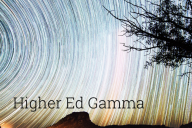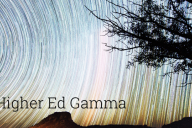You have /5 articles left.
Sign up for a free account or log in.
In his classic 1935 essay, “The Work of Art in the Age of Mechanical Reproduction,” Walter Benjamin argued that the technical reproducibility threatened to strip art of its aura. In the words of the German Jewish philosopher, cultural critic and essayist, “In even the most perfect reproduction, one thing is lacking: the here and now of the work of art—its unique existence in a particular place. It is this unique existence—and nothing else—that bears the mark of the history to which the work has been subject.”
A work of art’s aesthetic, transcendental, spiritual and cultural value, Benjamin argued, was giving way to its exhibition value, its commercial or market worth. Benjamin, like the proponents of the late-19th-century arts and crafts movement, also worried that technology and an ethic of efficiency threatened to erode craftsmanship and the value of heritage and tradition.
The advent of 3-D printing, text and image generators, and Autotune, a device that alters pitch in vocal and instrumental performances, has raised the issue that Benjamin identified to a new plane. What is the value of originality, authenticity, uniqueness and craftsmanship in today’s digital world?
Robert M. Pirsig’s unexpected 1974 bestseller, Zen and the Art of Motorcycle Maintenance—“Part road-trip novel, part treatise, part open letter to a younger generation”—grappled, in part, with a somewhat similar theme: how to reconcile quality and craftsmanship with soulless technology.
So, too, does Richard Sennett’s 2008 historical lament, The Craftsman, which argued that the essence of craftsmanship—skill, judgment, expertise and commitment to quality —“is tragically lacking in many areas of the industrialized world,” and is manifest in the “corrosive character of 21st century American capitalism” with its profusion of disposable goods and widespread disengagement, demoralization and sense of emptiness among workers.
Which brings us to a book that all of us who teach need to ponder. In his new book, The Real Work, Adam Gopnik, the New Yorker staff writer, art critic and best-selling author, suggests that it’s high time to replace the word learning with mastery.
To learn is to acquire knowledge and skills, at times through study or experience, but generally by being taught. I teach; my students (hopefully) learn. Learning, I other words, is a process of instruction and training, transmission and internalization.
Mastery, in contrast, seeks to achieve proficiency and expertise: to develop the capabilities and the expertise essential to performing a particular task well.
Gopnik’s book, as its subtitle makes clear, is about “the mystery of mastery”: how people master a craft, whether that is to paint, box, cook, dance, drive or perform magic tricks.
Gopnik’s book is filled with lessons that those who teach need to take to heart. Here are several:
- Mastery isn’t rare. It’s commonplace, and achieving mastery of a particular craft or skill is not beyond our capabilities. Indeed, among the book’s aims is to demystify and democratize mastery.
- Mastery isn’t acquired in a linear process. It inevitably involves setbacks, detours, pauses and restarts.
- Mastering a skill is a process that requires individuals to methodically break down a task and reconstruct it piece by piece.
- True mastery, regardless of field, requires repeated practice.
- Avoidance is the enemy of mastery. Mastery requires us to overcome our fears of inadequacy, embarrassment and failure.
- Trademarks of mastery are a willingness to pursue a challenge relentlessly, to invest and immerse oneself in the creative process, to improvise, experiment and adapt, and to pursue a task for its own sake.
As I read Gopnik’s book, several lines stood out.
First: “some knowledge cannot be communicated; it is yours and can only be shown.” The most an instructor can hope for is to become “a willing assistant and a spectator …” The teacher’s goal is to help students acquire their own “secret knowledge,” their personal voice.
Second: “we can do some things badly and still feel good about having done them and some things well and still feel badly about not doing them better.” The key is mind-set, the desire to master a craft or skill no matter how challenging, and persist until we can do this to the best of our ability.
Gopnik organizes his book around seven mysteries of mastery. These include:
- The mystery of performance—that what makes a particular act successful is invariably idiosyncratic and intensely personal.
- The mystery of interiority—that what goes on inside our heads matters as much as what is produced.
- The mystery of art and music—that as important as the work itself is how we translate brushstrokes and sounds (or, I might add, data and evidence) into meaning.
- The mystery of the late starter—that it is never too late to overcome our inhibitions and seek mastery of a skill.
- The mystery of the act—that performance is the outcome or practice and preparation.
Every teacher can learn something from certain themes that run through his book:
- That curiosity is essential in motivating a person to pursue mastery and not accept mediocrity.
- That the essential task in learning to bridge the divide “between ‘declarative knowledge’—knowing about something—and ‘procedural knowledge’—knowing how to do something.”
- That we must challenge students to reflect on how to turn an aspiration into an actual accomplishment.
After reading Gopnik’s book, I’ve begun to think about teaching in a new way. In the future, I will be much more explicit about the skills I want my students to master and will work harder to get my students to think about why mastering those competencies is important.
Adopting a mastering orientation won’t be easy. Among the biggest challenges I face as an instructor is to get my students to engage with the course material and invest themselves in developing and mastering the skills that I consider essential. With my classes ranging in size from 40 to 400 and beyond, I do my best to convey knowledge and design assignments and assessments to help my students learn essential skills. But I don’t do enough to help them master those skills, since that would require much more one-on-one interaction.
Shouldn’t our goal as teachers be to help students master the competencies, literacies and capabilities that define the academy: the ability to write and speak clearly, cogently and persuasively; to transform numbers into knowledge; to question, investigate, analyze, interpret and evaluate?
Mastery of essential skills and learning objectives ought to be our aim. If it is, we need to do more to insist that our campuses create conditions where we can work closely with students so that they can achieve mastery.
Which brings me back to the issue that I started with. Given access to ChatGPT, DALL-E and similar tools or to Wikipedia and calculators, what is the point of what we do in the classroom apart from credentialing? The answer strikes me as straightforward. We want our students to become craftsmen: to recognize the importance of technique, expertise, artisanship, practice and skill.
The distinguishing characteristic of craftsmanship is human presence. It’s about creating something that is distinctive, idiosyncratic and intensely personal. The real challenge today is to go beyond whatever text and image generators can offer and create something unique and special.
So let’s alter our goal as teachers and recognize that our goal isn’t merely to convey and assess knowledge. It’s to help our students alter their mind-set and strive for mastery, whether that is in communication, computation or critical thinking or in other realms that reside far outside the academic.



